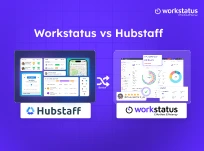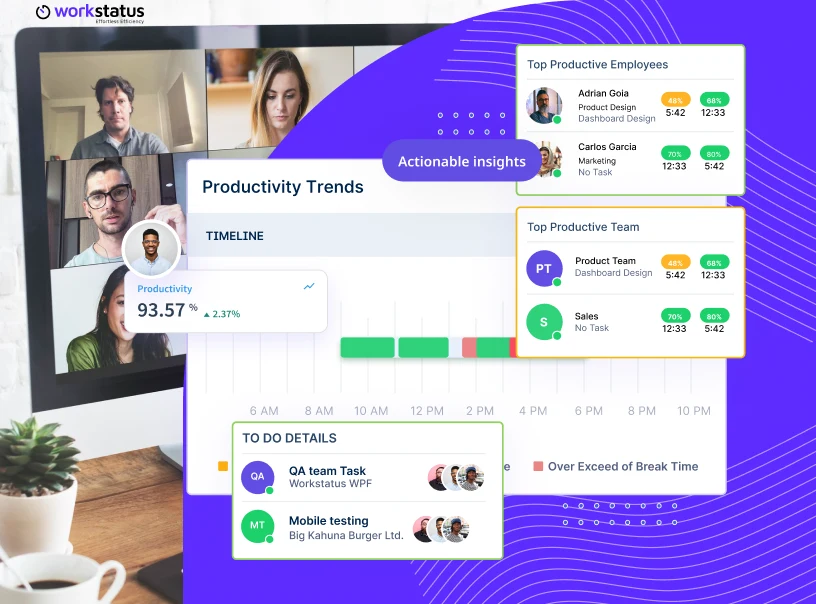Table of Contents
Remote work has become the new normal. But it brings its own set of problems, like:
- Poor visibility into how time is spent
- Uneven workload across team members
- Difficulty spotting burnout early
- Falling productivity without clear reasons
Remote work burnout is becoming a hidden challenge that affects both performance and morale.
Managers often ask: Is my team really being productive? Are they burning out?
Basic employee monitoring tools can show which team member is more active, but they don’t give the complete picture. For your remote teams, you need real-time insights.
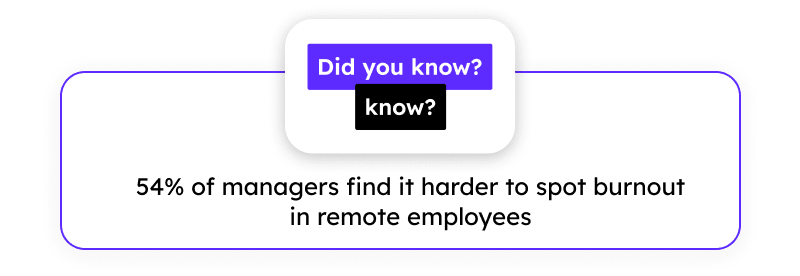
That’s where AI-powered tools come in. With AI-powered insights, you can:
- Understand real productivity patterns
- Find early signs of burnout and overload
- Support your team before problems grow
- Prevent remote work burnout without micromanaging
It’s time to move beyond simple tracking – and start helping your team do their best work.
Keep reading to see how AI-driven insights lead to better remote work.
Limitations of Traditional Employee Monitoring
Most employee monitoring software today simply track time and count clicks.
These basic tools tell you that an employee was at their computer from 9 to 5 and clicked the mouse 2,000 times, but what does that really mean?
A team member might look busy on paper while actually struggling with their workload or feeling stuck in a project.
T0hese old-school approaches create several problems for remote teams:
- They make employees feel watched and not trusted, hurting team spirit
- They focus on activity rather than actual results or quality of work
- They treat everyone the same, ignoring that different people work best in different ways
- They miss important signs that someone needs help or is heading toward burnout
- They create stress that actually reduces creativity and problem-solving abilities
The truth is, knowing someone is logged-in doesn’t mean they’re engaged, happy, or doing their best work.
You need tools that provide deeper understanding to prevent remote work burnout, not just more tracking.
Spotting Early Signs of Remote Work Burnout
Burnout happens slowly, like missing sleep night after night – you feel fine until suddenly you don’t.
In remote work, it’s harder to spot because you can’t see tired faces or hear frustrated sighs through a screen.
Smart managers know remote work burnout hurts everyone – work quality drops, mistakes happen, and good people leave.
But how do you catch it early with a scattered team?
Here’s how to spot burnout signs before they become serious problems:
- Changed work hours: Team members suddenly working nights or weekends
- Different communication: Shorter messages, slow responses, or going quiet in chats
- Dropping quality: Work that doesn’t match their usual standards
- Slower on simple tasks: Taking longer on things they used to finish quickly
- Missing from discussions: Less input in meetings and team brainstorms
- Missed deadlines: Falling behind when they were always on time before
- Camera off: Switching to audio-only when they normally show their face
- Pulling back socially: Not joining virtual coffee breaks or team events
- Changed attitude: Less friendly, fewer jokes, or more formal than usual
With these warning signs, you can check in naturally: “I noticed you’ve been working weekends lately – is everything manageable?”
This simple conversation can stop remote work burnout before it gets worse.
Remember, happy teams do better work, and catching burnout early helps everyone win.
Using AI for Smarter Productivity Tracking
AI helps you see more than just hours worked. It looks at real patterns in how your team works and gives useful remote team productivity insights – not just numbers.
Here’s how AI makes employee productivity tracking smarter:
- Find peak performance times – See when each team member does their best work and plan important tasks accordingly.
- Understand work styles – Learn how different team members tackle projects and what tools they use most effectively.
- Focus on results, not activity – Track what actually gets done rather than just mouse clicks or keyboard time.
- Balance team workloads – Easily see who has too much on their plate and who could handle more.
- Identify bottlenecks – Discover what tasks or processes slow your team down the most.
- Improve meeting efficiency – See which meetings are productive and which ones waste valuable time.
AI gives clear workforce analytics to have meaningful conversations based on facts, not feelings, and make changes that actually improve how work gets done.
This helps create a remote work environment where everyone can succeed without feeling constantly monitored.
Why Workstatus is the Ideal AI-Powered Remote Work Companion?
Workstatus stands out from other remote workforce tools because it truly understands how remote teams function.
Instead of just tracking hours, it offers meaningful insights that help managers support their teams, prevent burnout, and boost remote team productivity – without unnecessary pressure.
Let’s see how.
1. App & Website Usage
![]() Knowing how time is spent helps teams stay focused and avoid remote work burnout.
Knowing how time is spent helps teams stay focused and avoid remote work burnout.
- Tracks apps and website usage during work hours
- Replace this time with productive alternatives
- Identifies time-wasting tools vs. work-related platforms
- Flags patterns of excessive switching between tabs (a sign of mental fatigue)
- Helps managers guide teams toward more productive workflows
- Encourages discipline and better time management
Improving visibility into daily habits helps remote teams avoid distractions and stay engaged throughout the day.
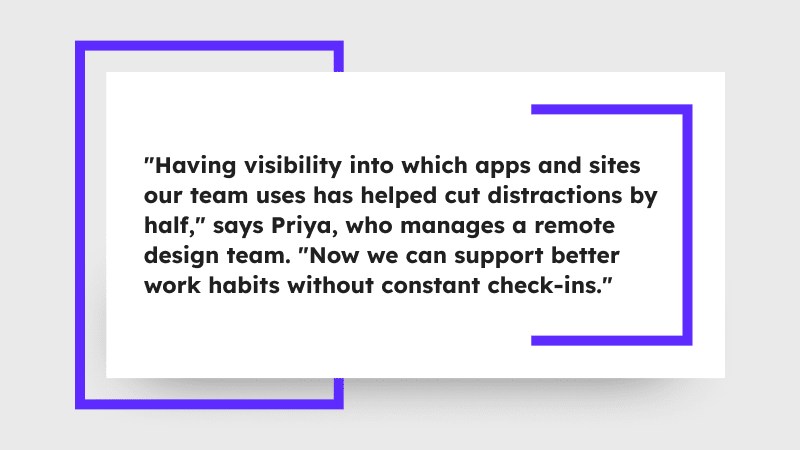
2. Idle Time Detection
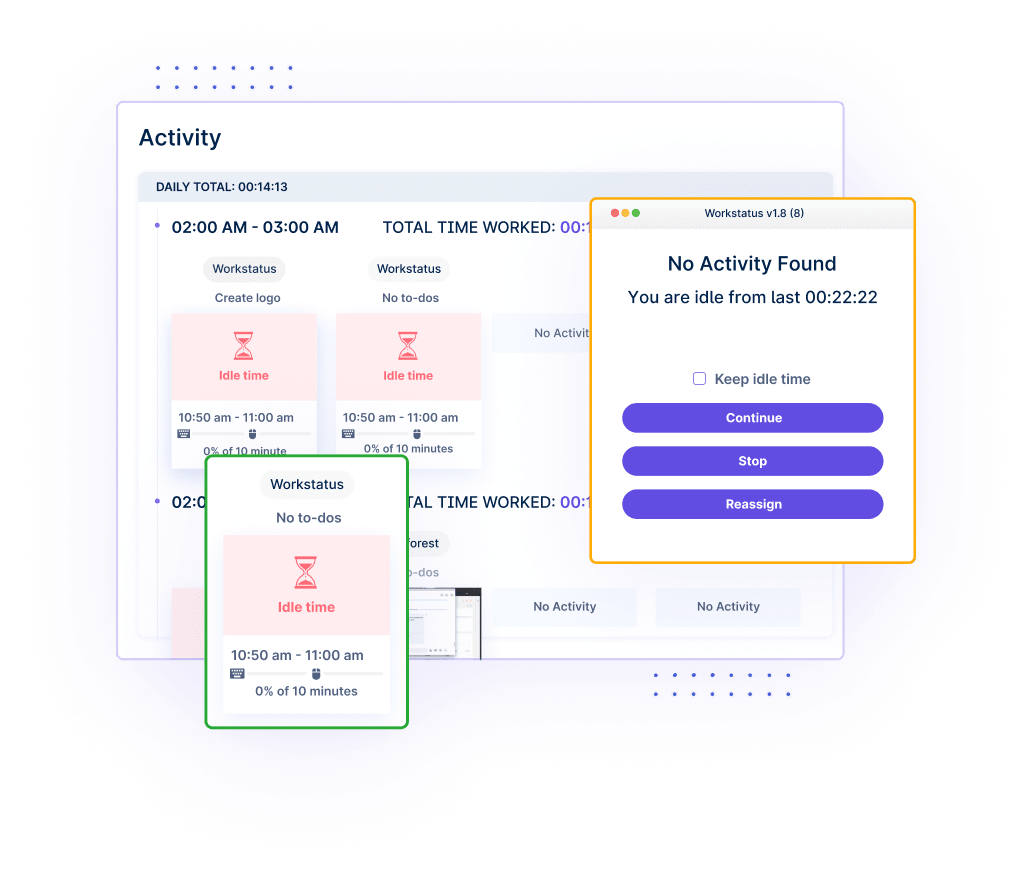 Noticing when someone steps away helps maintain a healthier pace of work.
Noticing when someone steps away helps maintain a healthier pace of work.
- Automatically detect idle time and prompts the user to remove it
- Reduces pressure to stay online unnecessarily or mimic busyness
- Supports natural breaks to recharge and reset
- Helps spot signs of disengagement or fatigue over time
- Ensures accurate billing without including non-working hours
Encouraging breaks through idle detection prevents remote work burnout and improves overall focus.
3. Productivity Reports
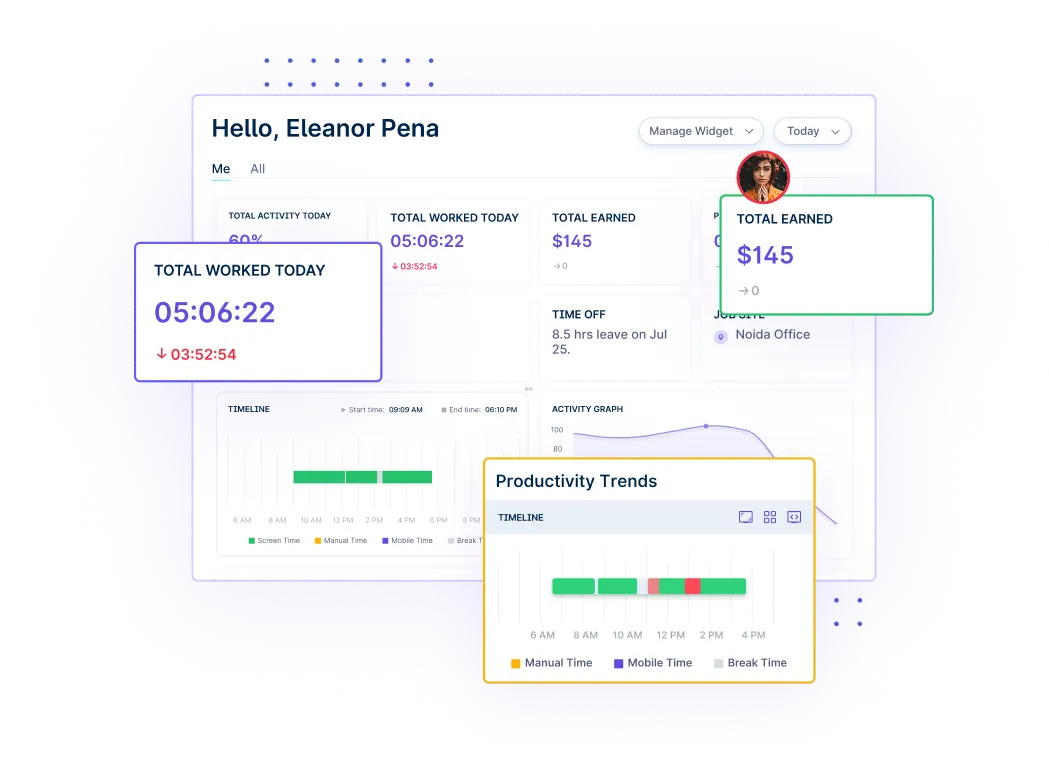 Clear data helps managers make informed decisions to support their remote teams.
Clear data helps managers make informed decisions to support their remote teams.
- Shows time spent on tasks, activity levels, and trends
- Productivity reports highlights overworked or underperforming team members
- Makes it easier to rebalance workload before stress builds up
- Helps identify high-performing periods for smarter scheduling
- Offers insights to support realistic goals and benchmarks
Data-driven insights help teams work smarter, not harder, reducing the risk of burnout.
4. Automated Screenshots
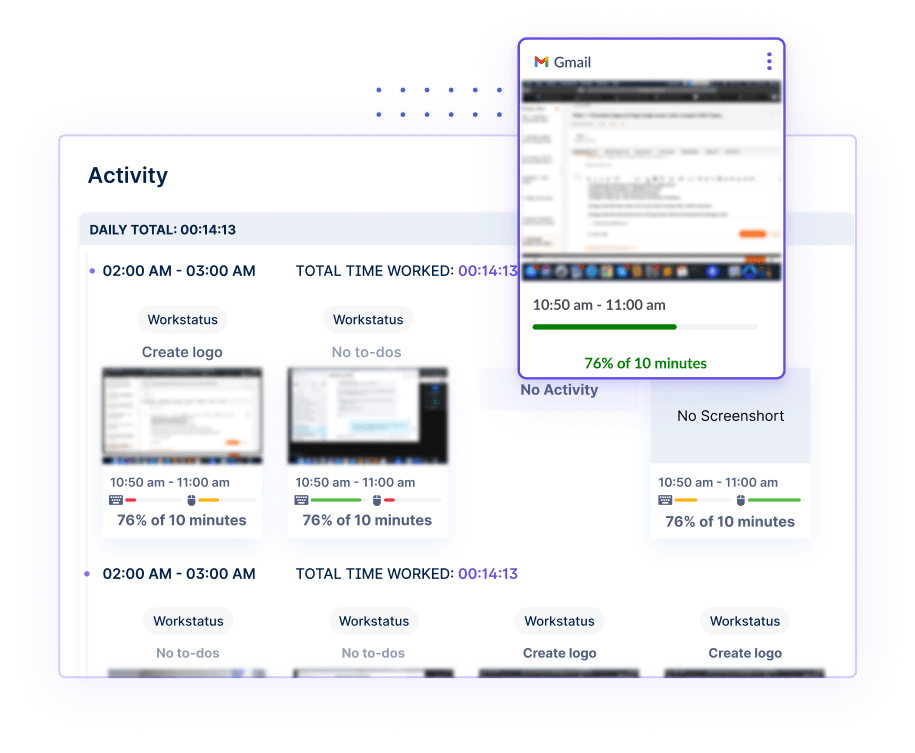 Stay informed without micromanaging.
Stay informed without micromanaging.
- Captures random screenshots while time tracking is active
- Promotes transparency in remote work environments
- Gives managers context around productivity patterns
- Helps identify blockers and provide timely support
- Reduces the need for frequent check-ins or status updates
A balanced layer of visibility keeps work on track without adding pressure.
5. Team Scheduling
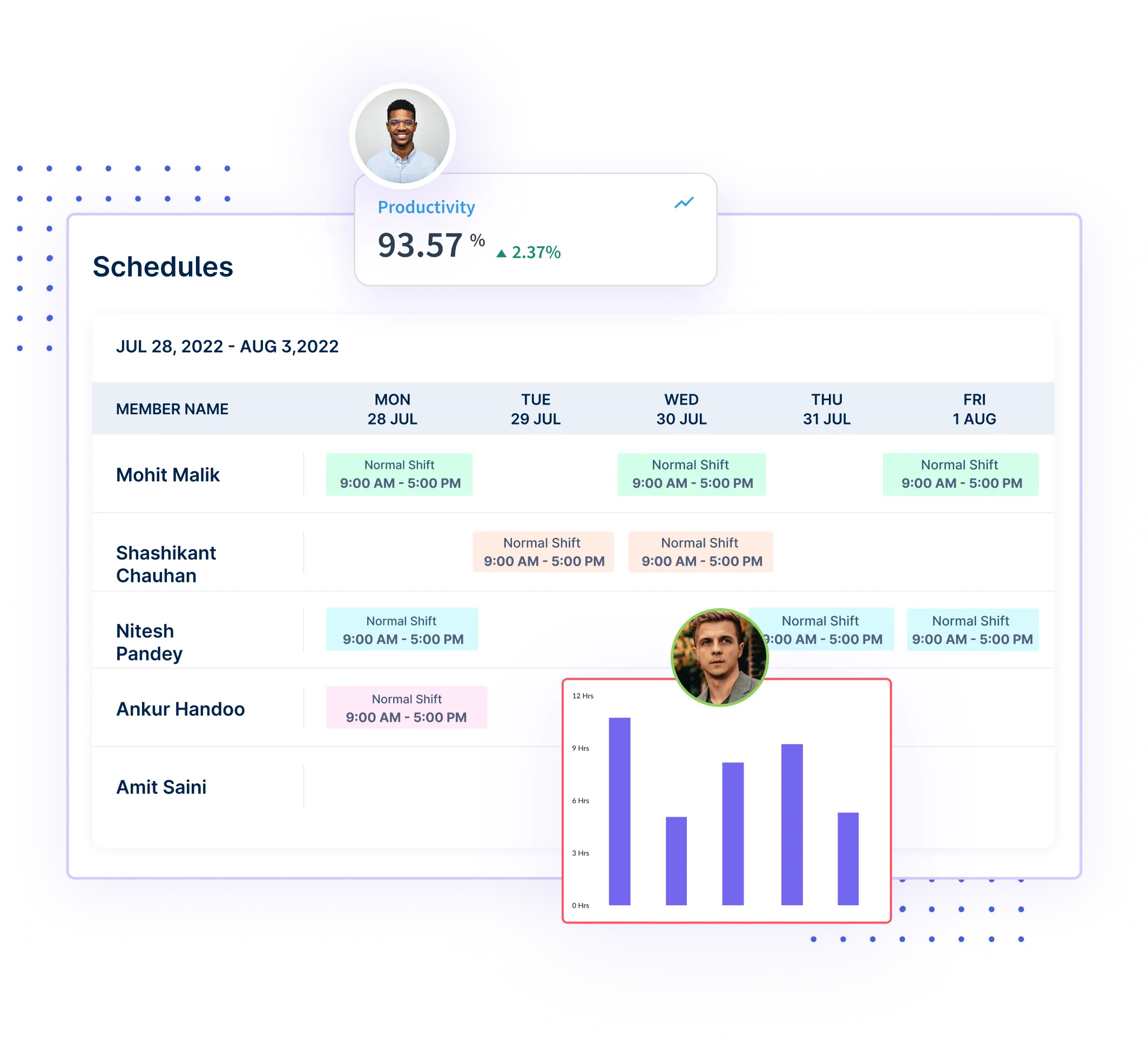 Clear, balanced schedules are essential for productivity and well-being.
Clear, balanced schedules are essential for productivity and well-being.
- Enables managers to set shifts and manage team availability
- Prevents scheduling conflicts and workload overlaps
- Supports flexibility while maintaining coverage
- Helps ensure no one is working too many hours or late nights
- Allows planned breaks and time off to be factored in
Thoughtful employee scheduling helps teams stay productive while respecting personal boundaries.
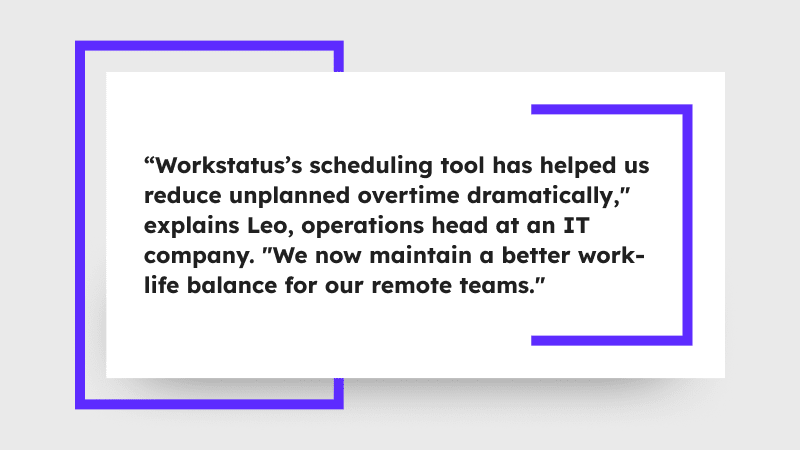
6. Real-Time Dashboard
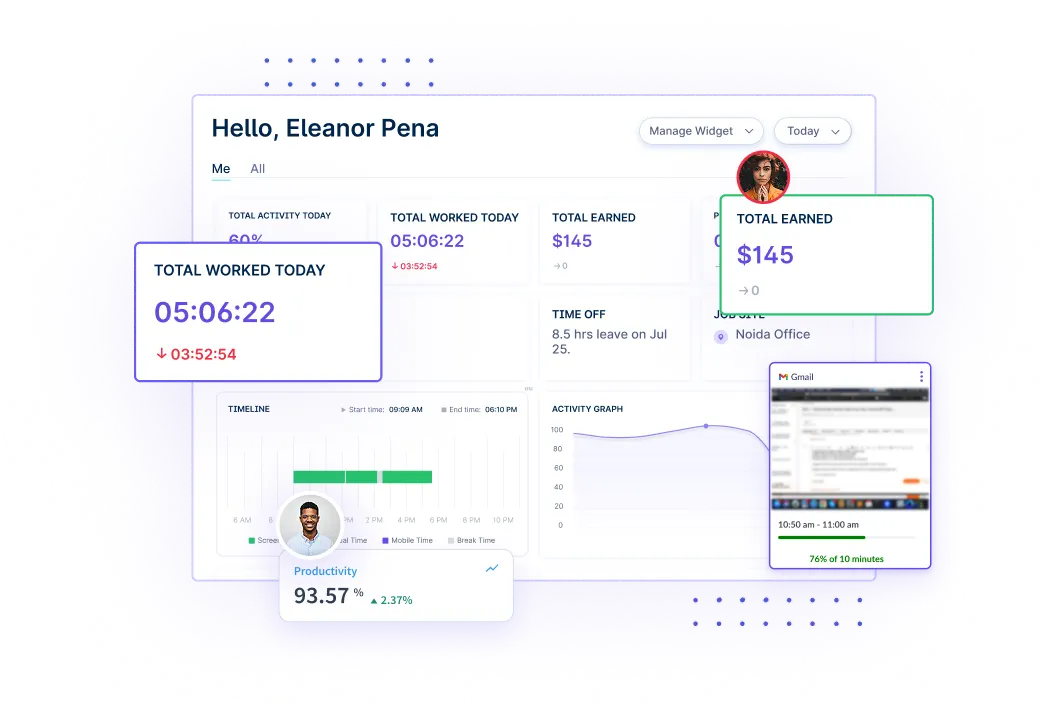 Real-time awareness helps managers act quickly to avoid burnout.
Real-time awareness helps managers act quickly to avoid burnout.
- Displays who is working, on what, and for how long
- Offers live insights into task progress and team activity
- Identifies under- or over-engaged team members instantly
- Reduces the risk of missed deadlines by catching delays early
- Tracks overtime so managers can intervene before overtime becomes routine
Having a live pulse on team activity ensures that no one falls behind or burns out silently.
Data-Driven Decision Making for Managers
Managing remote teams becomes far more effective when decisions are backed by real data.
Instead of relying on guesswork, tools like Workstatus give managers clear visibility into:
- How their teams work
- When they’re most productive
- Where delays happen
- How workloads are distributed
This helps in identifying issues early and is one of the most effective ways to prevent burnout in remote teams.
Here’s how Workstatus helps managers:
- Access real-time reports on activity levels, time spent on tasks, and project progress
- Identify overworked team members and reassign tasks accordingly
- Analyze productivity trends to optimize shifts and deadlines
- Catch early warning signs of disengagement or fatigue
- Performance reviews on measurable outcomes, not assumptions
Data helps managers support – not pressurize their teams, keeping both productivity and morale high.
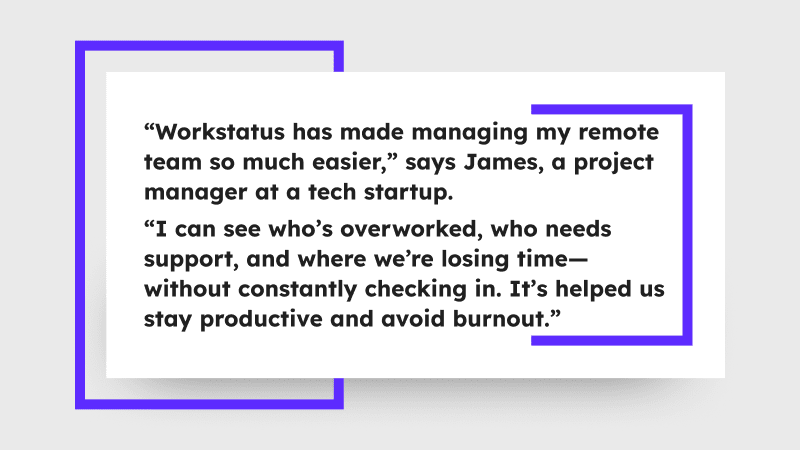
Creating a Healthy Remote Work Culture
Technology shapes culture whether we want it to or not. The remote team monitoring tools you choose send strong messages about what your company values.
Tools that monitor employees too closely say, “We don’t trust you.” A better approach says, “We want to help you succeed.”
Building a healthy remote culture needs careful choices:
- Clearly explain how and why you use remote team productivity tracking tools – focus on how they help everyone, not just bosses
- Use data to praise good work, not just to find problems
- Make it safe to talk about struggles by being curious, not critical
- Respect personal time and encourage breaks, using data to prevent working too much
- Ask for feedback about the tracking system and make changes based on team input
- Share team-level insights that help everyone understand company patterns and goals
- Use data to find and fix things that frustrate your team
With these practices, tracking productivity can help your culture grow instead of hurting it.
Teams work better when they feel supported, not monitored too closely.
Closing Thoughts
When your team is spread out and constantly switching between tools, it’s easy for remote work burnout to sneak in and productivity to drop.
Missed deadlines, long hours, and unclear priorities can quickly add up and hurt your team’s performance.
Workstatus helps fix this by giving you one smart platform that shows exactly how your team works.
With features like real-time dashboards, app tracking, and productivity reports, you get the full picture – without micromanaging.
Remote teams do better when they’re supported with the right tools, not just tracked.
Ready to build a more focused, balanced, and productive team?
Try Workstatus today and see how it helps you prevent burnout and get more done – without the stress.
Your team stays on track, your business grows faster, and you stay in control.
FAQs
Ques. How does Workstatus help remote teams stay productive?
Ans. Workstatus tracks time, app usage, and task progress in real time. It helps remote teams stay focused, avoid distractions, and work more efficiently without constant check-ins.
Ques. Can Workstatus prevent remote work burnout?
Ans. Yes. Workstatus shows when someone is working too many hours or not taking breaks. This helps managers adjust workloads, set better schedules, and prevent remote work burnout before it starts.
Ques. How much does Workstatus cost?
Ans. Workstatus’s pricing starts at just $1.60 per user per month, making it an affordable option for remote teams of any size. You get access to powerful productivity tools without breaking the budget.



